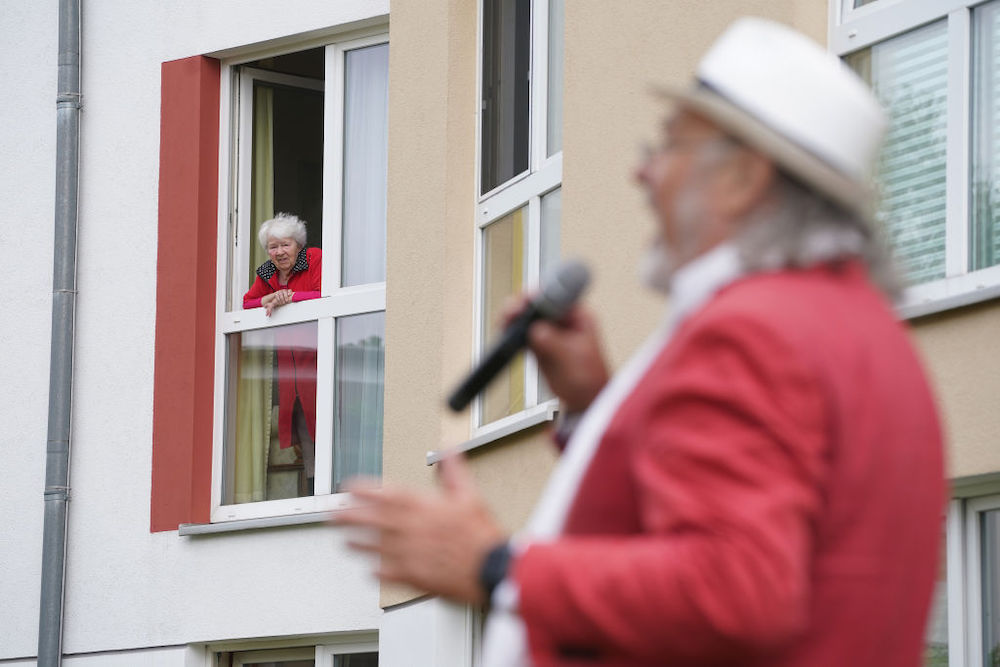- COVID-19 may speed up modernization and design at U.S. nursing homes
- The high death and infection rates at nursing homes drew attention to severe problems there
- One-third of all U.S. deaths related to COVID-19 are nursing home residents and workers
It may be COVID-19 that finally speeds up much-needed reforms in design and sustainability at U.S. nursing homes.
“The industry is in mortal combat for survival, especially in the Northeast,” Martin Siefering, a principal and co-leader of the senior living practice area for the architectural firm Perkins Eastman, told Karma. “A lot of these [nursing home] buildings, built in the 1960s and 1970s — and not to the highest standards then — are at the end of their usefulness.”
The crisis in nursing homes has come to the fore due to the widespread infection rates and deaths from COVID-19. As of May 11, one-third, or 218,000, of all U.S. deaths related to COVID-19 are nursing home residents and workers, reported the New York Times, and the virus has infected more than 153,000 at some 7,700 of these facilities.
According to the Centers for Disease Control and Prevention (CDC), in 2016, there were 15,600 such institutions with 1.7 million licensed beds. Siefering estimated that there are 1.6 million U.S. nursing home residents today, up from the CDC figure of 1.3 million in 2015.
Some nursing home companies are retrofitting and converting their facilities, which may be in the traditional T-shape style, or building new ones using the small-house concept. However, for many companies, any major new construction may have to wait until the economy improves.
In the near term, such facilities are looking to short-term, inexpensive solutions, Laurie E. Butler, principal, board director and leader of the senior living interior design group at Perkins Eastman, told Karma.
“We are focusing on the top recommendations of the CDC — wash hands, keep surfaces clean and go outdoors,” she said.
To avoid the need to touch surfaces, Butler said nursing homes will be equipped with more doors, faucets, and soap and towel dispensers that rely on motion sensors; voice-activated elevators, window treatments and lighting; flooring, such as carpet tiles, that is easily cleaned and replaced and safer for residents who may be prone to falling; and more sinks for washing hands, even in reception and other public areas. To keep costs down, whenever possible, these devices will be battery-powered.
Selecting products requires a balance, Butler said, since some sustainable products aren’t easily cleanable, while some easily cleanable products, such as vinyl, emit toxic fumes or off-gas at the “nose level,” more than carpeting does. Another factor to consider is that these rooms are residents’ homes and the institutional look needs to be minimized, she added.
Nursing home companies will also have to balance the merits of different designs in the face of COVID-19. The T-shape design seen at so many nursing homes shares staff, tends to centralize all services — cooking, cleaning and nursing — and typically houses at least two patients per room. All of those factors may be more efficient, but can promote the spread of infectious diseases.
The small-house concept may now become the long-term future of elderly housing. In this design, residents are grouped together in clusters of no more than 14, with one person per room, share a common kitchen and have a dedicated staff that does not work in other clusters. Should there be an infectious disease outbreak in one small-house cluster, it’s easier to identify and contain without disrupting the entire campus.
With the small-house concept, residents ideally have more choices in their meals and how their food is cooked, have better freedom of movement and can bond more easily with a smaller group of residents and staff.
“The adoption of this model already provides proof that these new models work: infectious disease can be better contained, and satisfaction levels are higher for staff, residents and families,” wrote Siefering in Seniors Housing Business.
Photo by Sean Gallup/Getty Images
























